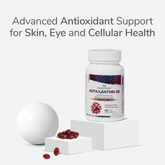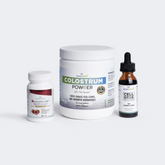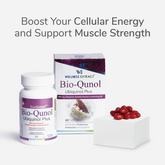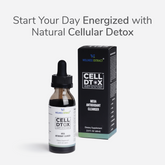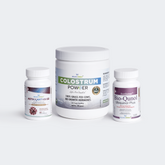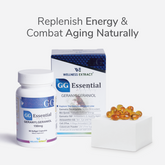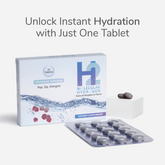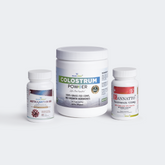Estimated Reading Time: 5 minutes
|
With its excellent antioxidative properties, tocotrienols help combat lipid peroxidation. But the real question is: where do you find them?
Day-by-day tocotrienols are gaining the spotlight as a potent vitamin E antioxidant. At present, hundreds of research studies, human trials, and clinical studies reveal their surprising health potential.
When combined with a healthy lifestyle, tocotrienols can do miracles by combating free radical-induced oxidative stress, regulating lipid levels, reducing inflammation, nourishing skin health, and promoting bone health. Not only that, emerging studies show that tocotrienols may have anti-angiogenic activity.
With its rising popularity, more people are looking for ways to incorporate tocotrienols into their diet. But where can you find these powerful vitamin E antioxidants? Unlike tocopherols, there are only a handful of foods with tocotrienols. Here is a guide for that.
A Quick Introduction to Vitamin E Tocotrienols
Tocotrienols are a lesser known yet potent form of vitamin E. They exist in four distinct isomeric forms: alpha (α), beta (β), gamma (γ), and delta (δ). Unlike tocopherols, tocotrienols have an unsaturated isoprenoid side chain that influences their antioxidant properties. Due to the flexible alkene side chain, tocotrienols can penetrate 40-60 times deeper into lipid membranes compared to tocopherols.
The structural variation influences the antioxidant mechanism of the compounds. Tocotrienols (particularly delta isomer) is the most potent vitamin E, also linked with several health benefits.
According to Dr. Barrie Tan, the world's foremost expert on vitamin E, a healthy adult needs around 100-200 mg of tocotrienol per day for cellular protection. Let’s see the best tocotrienol foods that you consider adding to your diet.
Tocotrienols Foods: Best Dietary Sources to Add to Your Routine
In modern times, vitamin E tocotrienol supplements are available to support cellular health and boost the body's metabolism. However, it is always best to add dietary nutrients for maximum natural benefits. Additionally, whole foods contain fats and carbohydrates that ensure better absorption of vitamin E tocotrienols.
-
Annatto Seeds: Purest Natural Source of Vitamin E Tocotrienols
You might not believe it, but Annatto, the purest and most potent natural source of tocotrienols, was commercialized much later in 2002.
-
Annatto seeds, derived from Bixa Orellana or Achiote plants, contain 100% tocotrienols, with 90% delta-isomers and 10% gamma-isomers.
-
In other words, annatto seeds are the only rare natural source of tocotrienols free from tocopherols and their interference.
-
You can add annatto paste or annatto seed powder to your kitchen recipe to utilize the antioxidant power.
-
Palm Oil: The First Commercialized Source of Tocotrienols
Palm oil is one of the most abundant foods with tocotrienols. In 1992, it was the first natural source for commercial extraction of vitamin E tocotrienols.
-
Due to its high yield, the tocotrienol-rich fraction (TRF) extracted from palm oil has been widely used in multiple clinical studies and research.
-
However, the limitation is that palm oil contains both tocotrienols and tocopherols. It contains approximately 70% tocotrienols, with 5%–30% in the alpha-tocotrienol form.
-
Rice Bran Oil: A Heart-Healthy Source of Tocotrienols
Rice bran oil is the third most popular food source of tocotrienols. The total tocotrienol content found in rice bran oil is 50% in different alpha, beta, and gamma isomers.
-
Though it contains less tocotrienols than palm oil and annatto seeds, it is an excellent dietary source, especially γ-tocotrienol.
-
You can use rice bran oil to cook or fry. Along with gamma tocotrienols, rice bran oil also moderately contains alpha and delta isomeric forms.
-
Tropical Fruits: Natural and Delicious Sources of Tocotrienols
Although most common tocotrienol supplements come from annatto seeds, palm oil, and rice bran oil, a few fruits also contain tocotrienols in lower concentrations. Here is the list of fruits that have tocotrienol content along with the composition:
|
Fruit |
Key Characteristics |
|
Sea Buckthorn Berry |
Higher in α-Tocotrienol and γ-Tocotrienol |
|
Grape Seed Oil (from Grapes) |
Relatively low levels of tocotrienols, mainly in gamma and delta isomer |
|
Cranberries |
Mainly γ-Tocotrienol and α-Tocotrienol isomers |
|
Blackberries & Raspberries |
A small amount of tocotrienols doesn't make a significant impact |
However, it isn't recommended to rely on these fruits for dosages of tocotrienols since they contain both tocotrienols and tocopherols in non-uniform proportions. And, often, tocopherol interference overshadows the medical properties of tocotrienols.
-
Other Lesser-Known Tocotrienol Food Sources
Beyond the prominent sources of tocotrienols mentioned above, here are a few more sources that contain vitamin E tocotrienols in relatively smaller proportions.
- Nuts and Seeds: Nuts and seeds, along with their oils, serve as significant sources of tocotrienols. Examples include hazelnuts, flaxseed, poppy seeds, sunflower seeds, and flax seeds.
-
Cereals and Grains: Cereals and grains, including oats, barley, rice, wheat germ, rye, and maize, also contain tocotrienols in notable amounts.
Tocotrienols Foods vs. Supplement: Which Is the Best
You might be surprised to find out that the average American diet provides only 2 mg of tocotrienol per day—a mere 1-2% of the ideal daily requirement. Additionally, unlike Annatto, all other tocotrienol food sources also contain tocopherols, which often dominate in concentration.
Therefore, you may include food sources in your diet, but it is best to add delta tocotrienol supplements to your routine for maximum health benefits. However, before starting supplementation, consult a medical expert for optimal dosages, especially if you have an underlying chronic condition.

Final Takeaway
Tocotrienols might not be as popular as tocopherols, but their health contributions are definitely more significant than their counterparts. Now that you know where to find tocotrienols, it's time to bring them to your plate!
You can marinate your meat with annatto extract, swap your regular cooking oils with palm oil and rice bran oil, or simply add whole grains like barley and oats to your diet. And, if getting enough tocotrienols from diet alone feels challenging, you may consider a GRAS-approved tocotrienol supplement to bridge the gap!
Disclaimer: These statements have not been evaluated by the FDA. The information contained within this page is for educational purposes only. It is not intended to replace the advice or attention of health care professionals.









![Top 5 Best Vitamins for Men in Their 30s [Backed by Science!]](http://wellnessextract.com/cdn/shop/articles/Vitamin_for_men_8fe0fe21-19b1-4020-b895-dc104449637e_165x.webp?v=1765878148)









